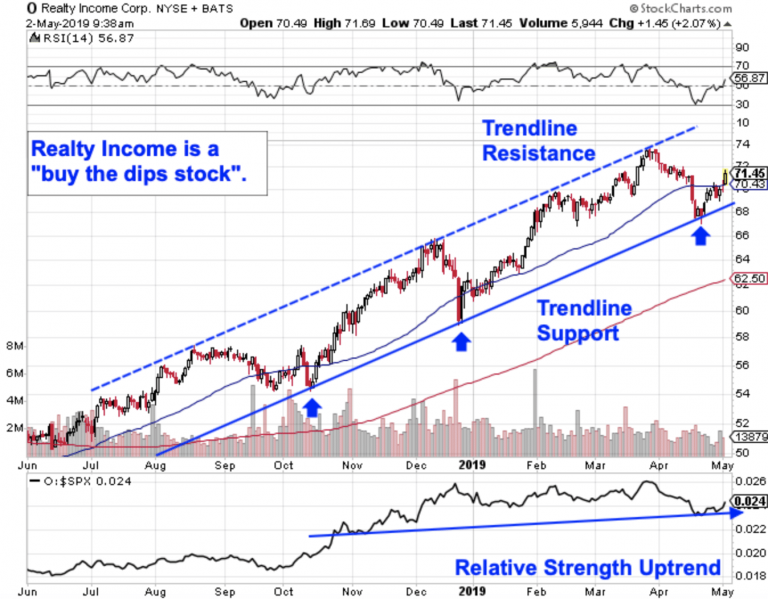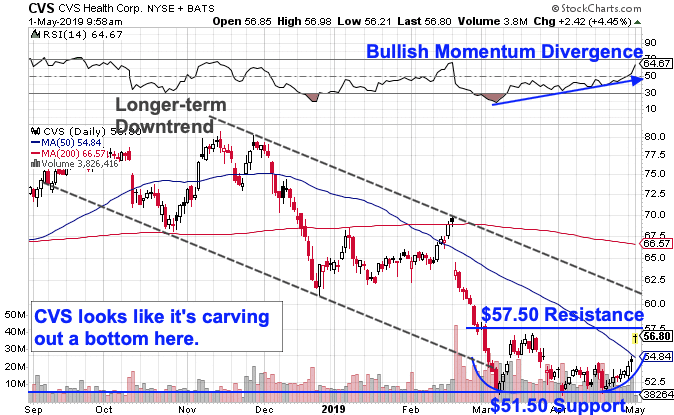Realty Income Is a ‘Buy the Dips’ Stock Post Earnings
Shares of Realty Income Corp. (O – Get Report) are seeing unusual volume Thursday, up as much as 2% early in the session on the heels of better-than-expected first-quarter earnings.
Realty Income posted funds from operations of 81 cents per share, besting analysts’ average guess by a penny. The trend has been a friend to real estate investment trusts in 2019 – and not just Realty Income. The popular Vanguard Real Estate ETF (VNQ – Get Report) has charged 21.5% higher since the calendar flipped to January, outperforming the strong 17% rally in the S&P 500.
Much of that upside has been propelled by a Fed that’s been more dovish than most investors could have predicted a year or two ago. And with interest rate conditions looking unlikely to change in the near to medium term, REITs continue to look like an attractive segment of the market overall.
Meanwhile, with earnings risk out of the way, Realty Income is leading the pack from a technical standpoint. To figure out how to trade shares from here, we’re turning to the chart:

You don’t have to be an expert technical trader to figure out what’s going on in shares of Realty Income right now; in fact, the price trajectory of this $21 billion REIT is about as straightforward as it gets.
Realty Income has been bouncing its way higher in an extremely well-defined uptrend for the better part of the last year. Simply put, every test of trendline support along the way – and in particular since last fall – has provided a low-risk buying opportunity before the next leg higher.
It’s a textbook example of a “buy the dips” stock.
Now, with Realty Income bouncing off of support once again, we’re seeing what looks like a solid opportunity to buy.
Relative strength, which measures Realty Income’s outperformance vs. the rest of the broad market, points to more upside ahead. The price bounce we saw in April helped relative strength put in a pair of higher lows, signaling that this stock continues to systematically outperform the rest of the broad market on a price basis right now.
Despite all of the evidence for higher ground in Realty Income, risk management remains key here. If you’re considering joining the buyers this spring, this REIT’s prior swing low at $67 makes a logical place to park a protective stop below. Simply put, if Realty Income violates that $67 low, then the uptrend is broken, and you don’t want to own it anymore.
Meanwhile, Realty Income’s trend looks alive and well as shares push into May. Earnings in the rearview mirror remove a key potential stumbling block on the way up.






